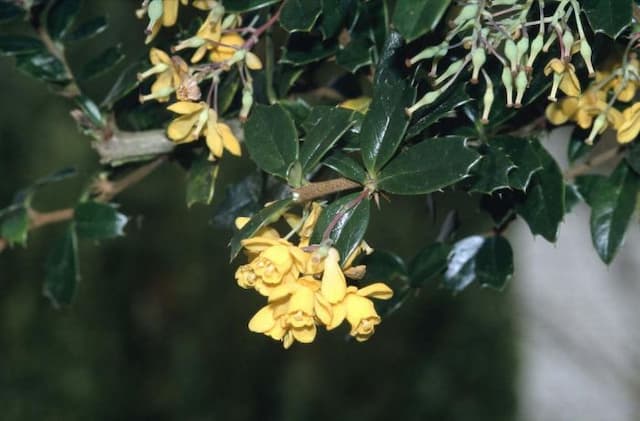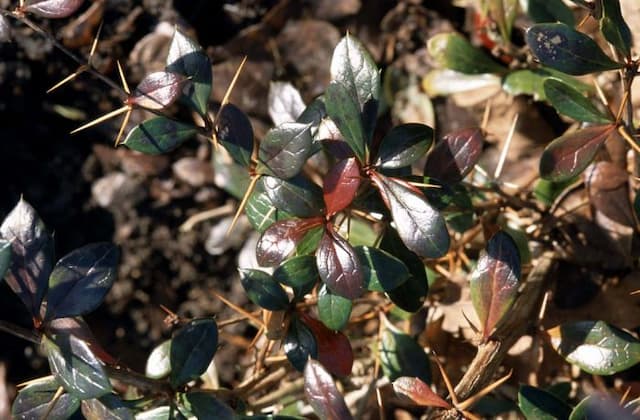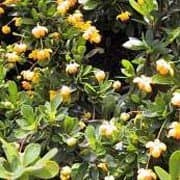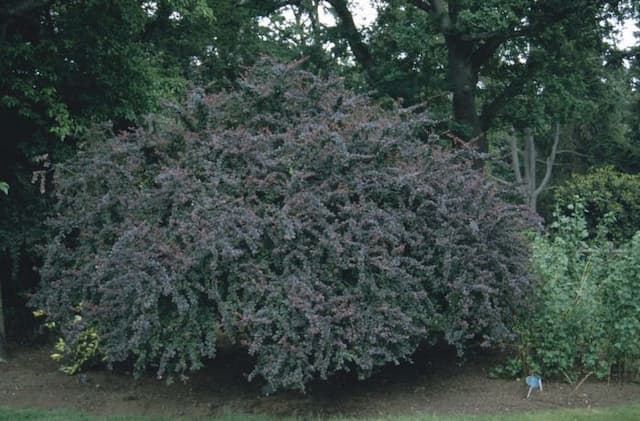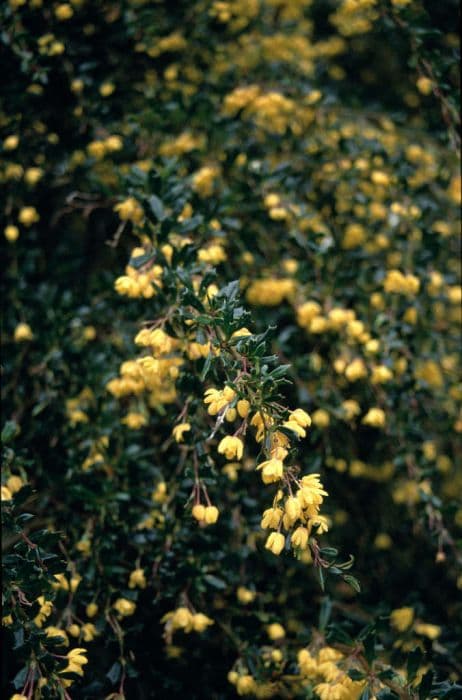Barrenwort Epimedium epsteinii
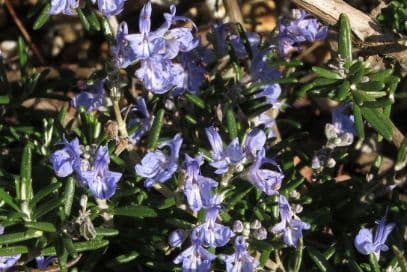
ABOUT
This plant, commonly known as Bishop's Hat, boasts a unique and elegant appearance. It is characterized by its attractive, heart-shaped leaves that are often with a leathery texture. The foliage emerges with a bronzy tint in spring, maturing to a rich green as the season progresses, sometimes displaying tinges of red or purple. Adding to its charm, the plant produces delicate flowers that are usually a complex structure with spurs, resembling little hats, hence the common name. These blossoms can be found in a variety of colors, often in shades of yellow, pink, red, or purple. They provide a delightful contrast against the rich backdrop of the foliage and create a stunning display when the plant is in bloom. The plant can be evergreen or deciduous depending on the climate, offering year-round interest in milder regions. The overall appearance of the Bishop's Hat gives it a light and airy feel, making it a graceful addition to any garden setting, especially in shaded areas where its qualities can truly stand out.
About this plant
 Names
NamesFamily
Berberidaceae.
Synonyms
Epstein's Barrenwort, Epstein's Horny Goat Weed, Yunnan Barrenwort.
Common names
Epimedium epsteinii.
 Toxicity
ToxicityTo humans
Epimedium epsteinii, commonly known as Epstein's Barrenwort, is not widely documented as a toxic plant to humans. There is limited information suggesting that ingestion of this plant causes significant toxicity or poisoning in people. However, as with many plants, it is always prudent to exercise caution and avoid ingesting parts of plants unless they are known to be safe and are intended for human consumption.
To pets
Epimedium epsteinii, also known as Epstein's Barrenwort, is not recognized for its toxicity in pets such as cats and dogs. There is no major toxic effect noted in veterinary literature for animals that might ingest this plant. Nonetheless, individual animals might experience different sensitivities, and any plant material ingested in large quantities may cause gastrointestinal upset or other non-specific symptoms, so monitoring and caution are advised if a pet consumes this plant.
 Characteristics
CharacteristicsLife cycle
Perennials
Foliage type
Deciduous
Color of leaves
Varies
Flower color
Yellow
Height
1-2 feet (30-60 cm)
Spread
1-2 feet (30-60 cm)
Plant type
Herb
Hardiness zones
5
Native area
China
Benefits
 General Benefits
General Benefits- Enhances garden aesthetics: Epimedium epsteinii, commonly known as the Bishop's Hat, offers attractive foliage and flowers that can add visual interest and beauty to shaded garden areas.
- Shade tolerant: It's well-suited for garden spots that don't receive full sunlight, providing ground cover even in difficult-to-plant shaded areas.
- Drought resistant: Once established, the Bishop's Hat is relatively drought-tolerant, making it a low-maintenance option for gardens in drier climates or periods of low rainfall.
- Cold hardy: This plant can withstand cold temperatures, making it a viable option for gardens in cooler climates.
- Ground cover: The dense foliage of Epimedium epsteinii can help suppress weeds and cover bare spots in the landscape.
- Soil erosion control: Its root system helps stabilize the soil, preventing erosion especially in sloped or uneven garden areas.
- Wildlife habitat: The flowers can attract pollinators such as bees, while the dense foliage provides shelter for small creatures.
- Low maintenance: Bishop's Hat requires minimal care once established, making it an ideal plant for busy or novice gardeners.
- Deer resistant: The plant is not favored by deer, so it's less likely to be damaged in areas where deer browsing is a problem.
- Seasonal interest: Epimedium epsteinii provides year-round interest with changing leaf colors in autumn and delicate flowers in spring.
 Medical Properties
Medical PropertiesThis plant is not used for medical purposes.
 Air-purifying Qualities
Air-purifying QualitiesThis plant is not specifically known for air purifying qualities.
 Other Uses
Other Uses- Ground Cover: Epimediums, commonly known as "horny goat weed," can be used as ornamental ground covers in shady garden spots due to their attractive foliage and resilience in low-light conditions.
- Floral Arrangements: The delicate flowers of Epimedium epsteinii can be used in floral arrangements, especially in spring-themed bouquets.
- Fairy Gardens: Because of their petite, delicate appearance, these plants can be ideal for fairy or miniature gardens, adding a whimsical touch.
- Erosion Control: Their dense growth habit helps in preventing soil erosion on slopes or in areas with loose soil.
- Bonsai Art: With their interesting leaf shapes and adaptable nature, horny goat weed can be trained as bonsai for decorative indoor gardening.
- Photography: The striking flowers of Epimedium epsteinii are often subjects of macro photography, highlighting the intricate details and colors.
- Textile Dye: Although not common, the leaves and stems may be used in creating natural dyes for textiles, giving subtle green hues.
- Landscape Design: Garden designers may use this plant for its texture and foliage in woodland landscape designs.
- Winter Garden Interest: Some species of Epimedium have evergreen leaves that provide color and interest in a winter garden when other plants have died back.
- Education: Botanical gardens and educational workshops might use Epimedium epsteinii to teach about plant adaptation in shade environments and ground cover species.
Interesting Facts
 Feng Shui
Feng ShuiThe Bishop's hat is not used in Feng Shui practice.
 Zodiac Sign Compitability
Zodiac Sign CompitabilityThe Bishop's hat is not used in astrology practice.
 Plant Symbolism
Plant Symbolism- Love Aid: Epimediums, commonly known as "Horny Goat Weed," are often associated with aphrodisiac properties, symbolizing assistance in love and enhancing sexual vitality.
- Longevity: In traditional Chinese medicine, Epimediums are believed to support long life, making them a symbol of longevity and vitality.
- Overcoming Difficulties: These resilient plants can thrive in challenging conditions, often symbolizing the ability to overcome adversity.
- Protection: Some believe that Epimedium has protective qualities, symbolizing a safeguard against negative forces.
 Water
WaterBishop's hat should be watered regularly to keep the soil consistently moist, especially during its growing season in spring and early summer. You would typically water this plant about once a week, but always check the top inch of soil for dryness before watering. When watering, apply water slowly and deeply until it begins to drain out of the bottom of the container, which may be approximately a quart of water for small pots or up to 1-2 gallons for larger outdoor plantings. During the winter months, reduce watering frequency as the plant enters dormancy.
 Light
LightBishop's hat thrives in partial shade to full shade conditions. The ideal spot for this plant would be an area that receives dappled sunlight or light shade throughout the day. Avoid placing it in direct sunlight, as this can scorch the leaves and diminish the plant's health.
 Temperature
TemperatureBishop's hat prefers growing in cooler temperatures and can tolerate a range of conditions. The ideal temperature range for this plant is between 50°F and 75°F. Bishop's hat can survive minimum temperatures down to 20°F, but it's important to protect it from extreme cold. Likewise, it can endure higher temperatures up to about 80°F, as long as it is not in direct sunlight.
 Pruning
PruningPrune Bishop's hat to remove any damaged or dead foliage, which helps to encourage new growth and maintain the plant's appearance. Light pruning can be done in early spring before new growth begins. Removal of old leaves after winter, before the new flowers and foliage emerge, is often recommended to allow for a fresh flush of growth.
 Cleaning
CleaningAs needed
 Soil
SoilBishop's Hat requires well-drained, loamy soil enriched with organic matter. The ideal pH range is slightly acidic to neutral, between 5.5 and 7. A mix of garden soil, compost, and perlite or sand can provide good drainage and fertility.
 Repotting
RepottingBishop's Hat doesn't need frequent repotting; do it every 3-4 years or when the plant outgrows its container. It's best to repot in the spring before new growth starts.
 Humidity & Misting
Humidity & MistingBishop's Hat thrives in moderate to high humidity levels, ideally between 40-60%. It can tolerate lower humidity but providing a humid environment is beneficial.
 Suitable locations
Suitable locationsIndoor
Place Bishop's Hat in a spot with bright, indirect light and ensure high humidity.
Outdoor
Plant Bishop's Hat in partial shade and protect from strong winds.
Hardiness zone
5-9 USDA
 Life cycle
Life cycleEpimedium epsteinii, commonly known as barrenwort, begins its life cycle as a seed, which after stratification, germinates in spring when the soil warms. The seedling develops a rosette of leaves and a small root system, eventually becoming a juvenile plant. As it matures, barrenwort forms a clumping perennial with heart-shaped leaves and gains the ability to undergo vegetative reproduction through rhizome division, which helps to expand its growth. In the spring, the plant produces flower stalks with delicate blooms, usually in shades of yellow, red, or purple, depending on the cultivar. Following pollination, seeds are produced and dispersed, allowing barrenwort to colonize new areas. It is a resilient plant that enters dormancy in winter, with foliage dying back, only to emerge again from its roots with new growth the following spring.
 Propogation
PropogationPropogation time
Spring to summer
Propogation: The most popular method of propagation for Epimedium epsteinii, commonly known as Barrenwort, is division. This is typically done in the spring or early fall when the plant is not in active bloom. To propagate by division, carefully dig up an established clump of Barrenwort and gently separate the rhizomes, making sure that each division has at least one growth point or bud. These divisions should then be replanted immediately at the same soil depth they were previously growing, spaced about 12 inches (roughly 30 centimeters) apart to allow ample room for growth. Water the new divisions thoroughly after planting to help establish them. This method of vegetative propagation not only helps to increase the number of plants but also rejuvenates older clumps that may have become woody or less vigorous over time.
